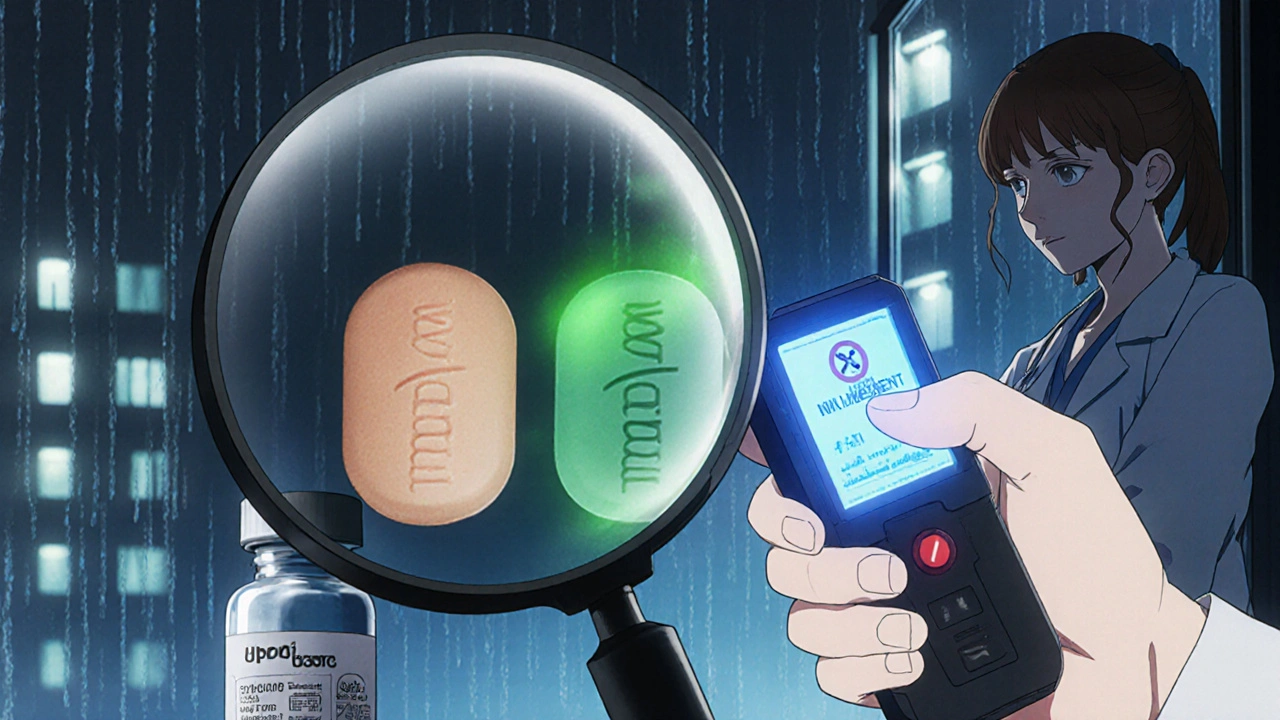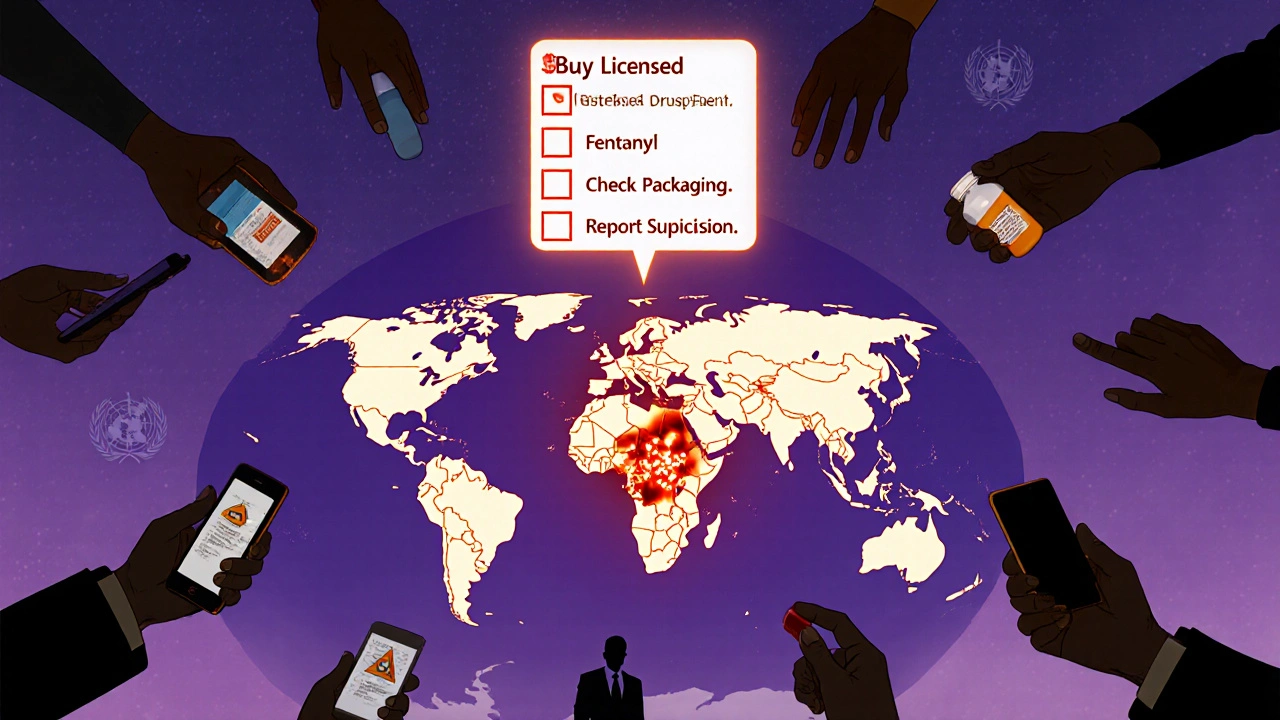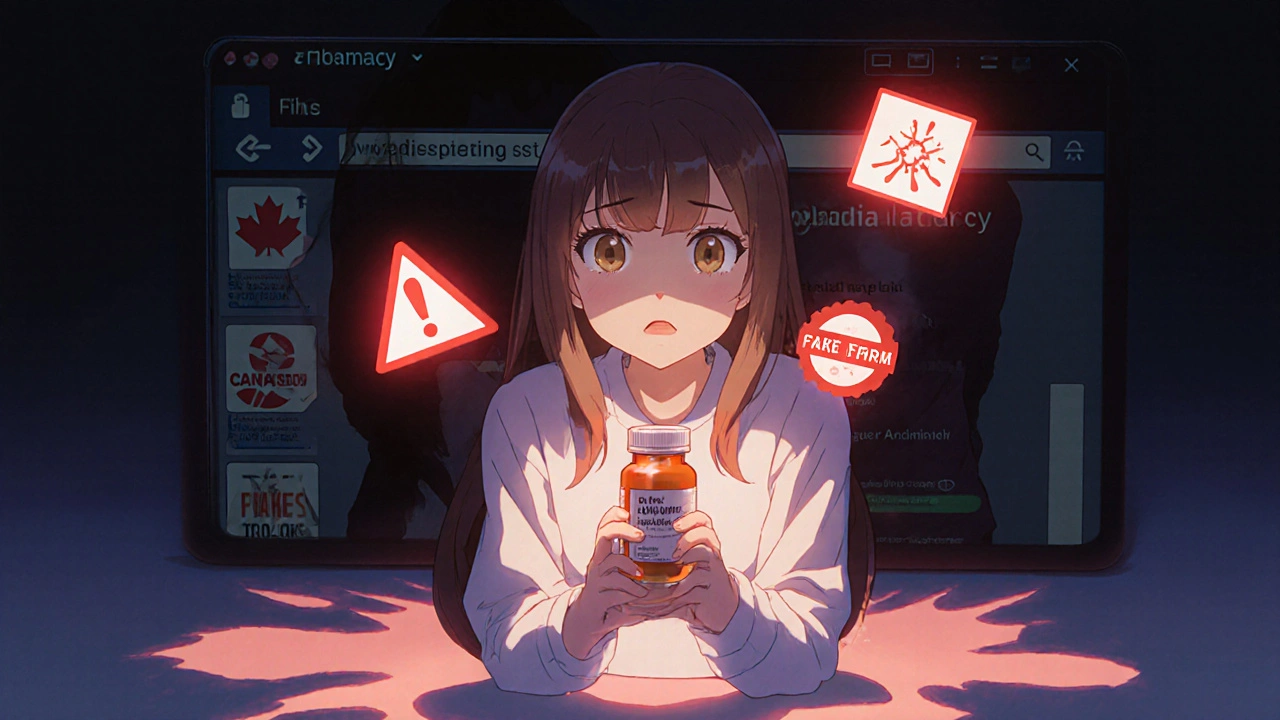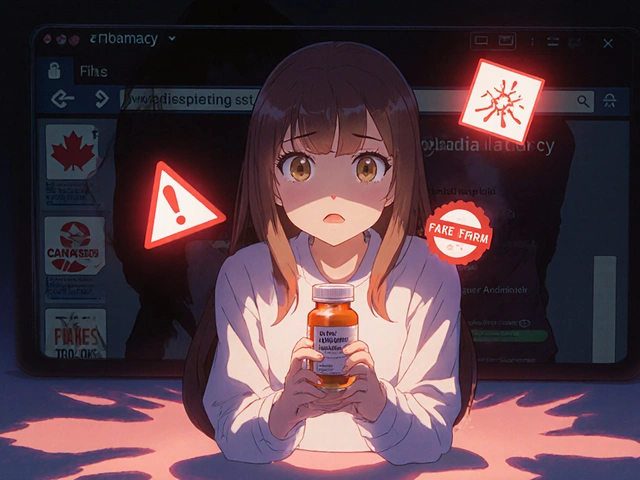Counterfeit Medicine Checker
How to Use This Checker
This tool helps you check your medication for common indicators of counterfeit drugs. Look at your medicine and select all the characteristics you notice that match the descriptions below.
Check Your Medicine
Select all the indicators you notice on your medicine's packaging and pill.
Results
Every year, millions of people around the world take medicine they think is real-only to find out too late it’s a deadly fake. These aren’t just poorly made knockoffs. Counterfeit medications can contain no active ingredient at all, or worse, deadly substances like fentanyl, rat poison, or industrial chemicals. And they’re easier to find than you think.
What Exactly Are Counterfeit Medications?
Counterfeit medications are drugs that have been deliberately and fraudulently mislabeled. They might say they’re insulin, antibiotics, or cancer drugs-but they don’t contain what they claim. Some have too little of the real medicine to work. Others have none. A few even contain toxic chemicals that can cause organ failure or death. The World Health Organization (WHO) breaks this down into two types: falsified (deliberately fake) and substandard (poorly made but not intentionally deceptive). Both are dangerous. In 2024, the Pharmaceutical Security Institute recorded over 6,400 incidents of counterfeit or stolen drugs across 136 countries. That’s not a number you can ignore. These fakes aren’t just sold on shady websites. They’ve slipped into legitimate supply chains. In 2025, Interpol’s Operation Pangea XVI seized over 50 million doses of fake pills and shut down 13,000 online stores. One of the most common targets? Painkillers, antibiotics, and insulin. Why? Because they’re in high demand and people will pay anything to get them.How Do Fake Medications End Up in Your Hands?
Most counterfeit drugs enter the market through the internet. Over 97% of websites selling prescription drugs are illegal. Many look professional-clean design, SSL certificates, even fake “Canadian pharmacy” logos. But here’s the truth: if a site claims to sell Canadian drugs but ships from China, it’s a scam. The FDA says 85% of drugs sold from websites claiming to be Canadian actually come from unregulated sources. These sites don’t require prescriptions. They don’t ask for medical history. They just want your credit card. Social media is another growing danger. Instagram, Facebook, and TikTok ads promise “miracle cures” for diabetes, erectile dysfunction, or anxiety. They’re often run by criminal networks using encrypted apps and cryptocurrency to avoid detection. In Nigeria, people have died after buying fake antimalarials sold as “fast-acting relief.” In South Africa, police seized counterfeit drugs worth over $100,000 in just one city last month. Even in countries with strong regulations like the U.S., fake drugs are slipping through. The U.S. Pharmacopeia reported over 1,200 adverse events linked to suspected counterfeit medications in 2025-87% of them from people who bought online without a prescription.How to Spot a Fake Medicine
Fake drugs are getting smarter. Some now have holograms, serial numbers, and packaging that looks identical to the real thing. But they still make mistakes. Here’s what to look for:- Packaging errors: Typos, blurry logos, mismatched colors, or inconsistent font sizes. Check the expiration date-is it too far in the future? Real drugs rarely have expiration dates more than 3 years out.
- Pill appearance: Does the pill look different from what you’ve taken before? Wrong color, shape, size, or markings? Even small differences matter. A patient in Texas noticed her insulin pills were lighter and smoother than usual-turns out, they contained no insulin.
- Smell and texture: If the medicine smells like chemicals or tastes bitter when it shouldn’t, stop using it. Real medications have a consistent texture. If it crumbles, sticks, or feels oily, it’s suspect.
- Missing tamper-proof seals: Bottles should have a seal under the cap. Blister packs should show signs of being opened. If the seal is broken or missing, don’t take it.
- Unusually low price: If a brand-name drug is 70% cheaper than at your local pharmacy, it’s likely fake. Real pharmaceuticals have fixed pricing due to regulations and manufacturing costs.

How to Buy Medicines Safely Online
You don’t have to avoid online pharmacies entirely-but you need to be smart.- Only use VIPPS-certified pharmacies: Look for the Verified Internet Pharmacy Practice Sites (VIPPS) seal from the National Association of Boards of Pharmacy (NABP). You can verify the pharmacy’s license at nabp.pharmacy.
- Require a prescription: Any pharmacy that sells prescription drugs without one is breaking the law. Period.
- Check the physical address: Legitimate pharmacies list a real street address, not just a PO box. Call them. Ask questions. If they’re evasive, walk away.
- Use the FDA’s BeSafeRx tool: The FDA offers a free checker to verify if a website is safe. Just enter the URL.
- Never buy from social media: No matter how convincing the ad, don’t click. These are almost always scams.
What to Do If You Suspect a Fake
If you think you’ve been given a counterfeit drug:- Stop taking it immediately. Even if you feel fine, the damage might already be done.
- Save the packaging and pills. Don’t throw them away. They’re evidence.
- Report it: In the U.S., file a report with the FDA’s MedWatch program. In New Zealand, use the MedSafety app. In other countries, contact your national health regulator.
- Call your doctor. Let them know what happened. They may need to run tests or adjust your treatment.
Why This Matters Beyond Your Own Health
Counterfeit drugs don’t just hurt individuals. They hurt everyone. When people take fake antibiotics, the bacteria don’t die-they adapt. That’s how antimicrobial resistance grows. The WHO calls this one of the biggest global health threats of our time. Fake drugs are fueling superbugs. Legitimate pharmaceutical companies lose an estimated $200 billion a year to counterfeiting. That money could’ve gone into research for new cancer treatments, vaccines, or rare disease therapies. And it’s not just about money. In Africa, counterfeit antimalarials are directly responsible for over 120,000 deaths each year. In India, fake diabetes drugs have led to widespread kidney failure among patients who thought they were managing their condition. This isn’t a distant problem. It’s happening in your neighborhood, your town, your online cart.
What’s Being Done to Stop It?
Governments and companies are fighting back. The European Union’s Falsified Medicines Directive requires all prescription drugs to have unique identifiers and tamper-evident packaging. The U.S. is rolling out the DSCSA system. In China, authorities cracked down on 18 counterfeit drug factories in 2025, arresting over 200 people. New technology is helping too. Portable spectroscopy devices-small enough to fit in your pocket-can scan a pill and tell you in seconds if it contains the right active ingredient. The global market for these devices is expected to hit $2.3 billion by 2030. But tech alone won’t fix this. The real solution is awareness. You need to know how to spot the signs. You need to know where to buy safely. And you need to report anything suspicious.Final Checklist: Your 5-Point Safety Plan
Here’s what to do every time you buy medicine:- Buy only from licensed pharmacies-in person or online with VIPPS certification.
- Never buy without a prescription-not even for over-the-counter drugs sold as “prescription strength.”
- Inspect every package-look for spelling errors, odd colors, or missing seals.
- Check the NDC number-find it on the box and verify it on the FDA’s database.
- Report anything suspicious-your report could save a life.
How common are counterfeit medications?
The World Health Organization estimates that 1 in 10 medicines in low- and middle-income countries are falsified or substandard. In some regions, that number rises to over 30%. Even in high-income countries like the U.S., counterfeit drugs are rare in physical pharmacies-under 1%-but make up the vast majority of drugs sold online without a prescription.
Can I trust online pharmacies that claim to be Canadian?
No. The U.S. Food and Drug Administration (FDA) states that 85% of websites claiming to sell Canadian medications are actually based outside Canada and operate illegally. These sites often source drugs from unregulated countries like India or China, where quality control is minimal. Always verify the pharmacy’s license through the National Association of Boards of Pharmacy (NABP).
What should I do if I find a fake pill?
Stop using it immediately. Keep the packaging and the pill. Report it to your country’s health authority-like the FDA’s MedWatch program in the U.S. or MedSafety in New Zealand. If you’ve taken it, contact your doctor right away. Fake pills often contain fentanyl or other deadly substances, even if they look like common painkillers.
Are fake drugs only a problem in poor countries?
No. While counterfeit drugs are more common in regions with weaker regulation, they’re a global problem. In 2025, Interpol seized millions of fake pills in the U.S., Europe, and Australia. Criminal networks target high-demand drugs like insulin, cancer treatments, and heart medications everywhere. Even in wealthy countries, people are buying fake drugs from shady websites.
Can I use a phone app to check if my medicine is real?
Some apps can help, but they’re not foolproof. The WHO’s MedSafety app lets you report suspicious medicines and check for alerts. In some countries, like India and South Africa, apps let you scan a serial code on the packaging to verify authenticity. But these systems aren’t universal. The best protection is buying from licensed pharmacies and checking packaging yourself.
Why are counterfeit drugs so hard to detect?
Criminal networks now use advanced printing, holograms, and even serialization to copy real packaging. Some fake pills are made with the same machinery as real ones. The only reliable way to detect them is through laboratory testing or portable spectroscopy devices-which most consumers don’t have access to. That’s why prevention-buying from trusted sources-is your best defense.







Write a comment
Your email address will be restricted to us